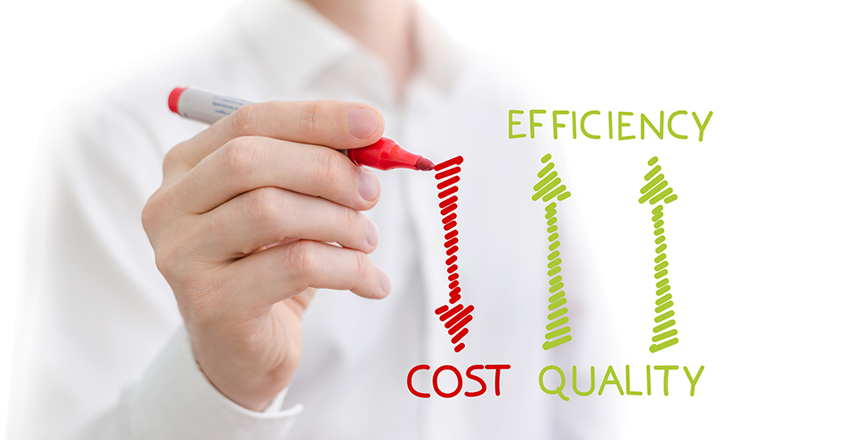
Improving Production Efficiency

Do you feel like you're being squeezed by the competition? You have to cut costs when there are no more places to cut? You need to turn your operations around before profits and customer satisfaction begin to suffer?
Concentrating on operational efficiency can benefit your business work smarter: increase efficiency, reduce costs, and streamline processes. Are there concrete changes you can make to simplify and improve how your business works?
How do you identify and eliminate waste?
Operational efficiency (OE) and lean manufacturing both target waste. This means identify where you spend resources (time, money, people, effort, etc.) on activities that do not add value to your product or service, and then eliminating such problematic areas. The results are measurable, immediate and sustainable.
In general, there are 9 main origins of waste in a business:
- Overproduction
- Delays
- Unnecessary transportation
- Too much inventory
- Defective products
- Defective design
- Complicated processes
- Outdated equipment
- Poorly trained employees
How OE can help you work smarter - not harder
American Links Operational Efficiency approach works because it comprises of all employees in cultivating the plants administrative and manufacturing procedures. The paybacks derived by companies who have implemented OE measures include:
- Significant long term cost savings
- Increased productivity (10% to 50%)
- Reduced inventory (30% to 80%)
- Reduced setup time via QCO (Quick Changeover) (30% to 90%) and response time (30% to 70%)
- Improved quality control and reduction of non-value-added costs (5% to 30%)
- Strong competitive advantage
- Increased profits
How does OE work?
Our well experienced consultants assess your company's management processes, observing everything from methods and systems to supply chain and human resources. There after they develop and execute a customized action plan, and recognize the necessary training for your employees. The consultants also conduct a continuous follow-up to ensure that new processes are sustained over time.
The following are the main tools used by our consultants for improving operational efficiency:
- Mapping: Accurately charting your operations using diagrams and flowcharts to visualize problems and
improvements
- VSM (Value Stream Mapping)
- SLD (Swim Lane Diagram)
- SPAG (Spaghetti Diagram)
- 5S Process (Sort, Straighten, Sweep, Standardize and Sustain): Reducing delays and gaining space through a clean and well-maintained workplace.
- SMED (Single-Minute Exchange of Die): Reducing equipment changeover time and downtime
- PARETO (the 80/20 Law): Targeting 20% of the causes will resolve 80% of the problems
- OEE (Overall Equipment Efficiency): Determining the overall effectiveness of equipment by measuring its availability, quality and performance
- Benchmarking Setting standards by measuring your performance and comparing it to similar companies and to industry best practices
- Kaizen activities (Continuous improvement): Making ongoing efforts to perfect the way you do business by reducing time, cost, space, mistakes and effort
- Pull System Maintaining an orderly flow of material. One of the primary tools of the JIT (Just-In-Time) system